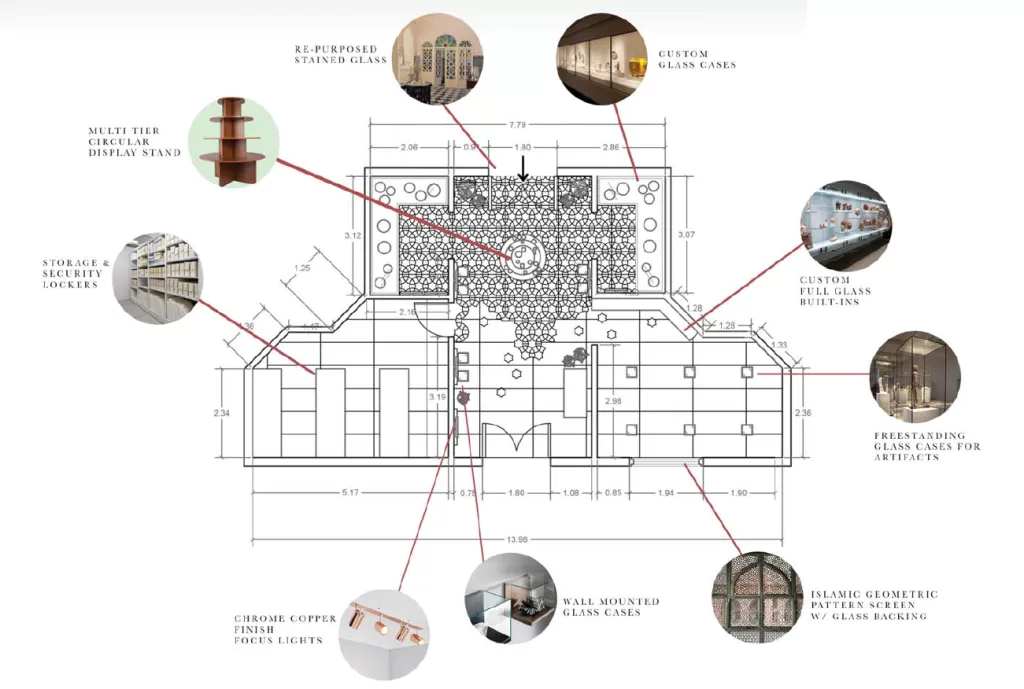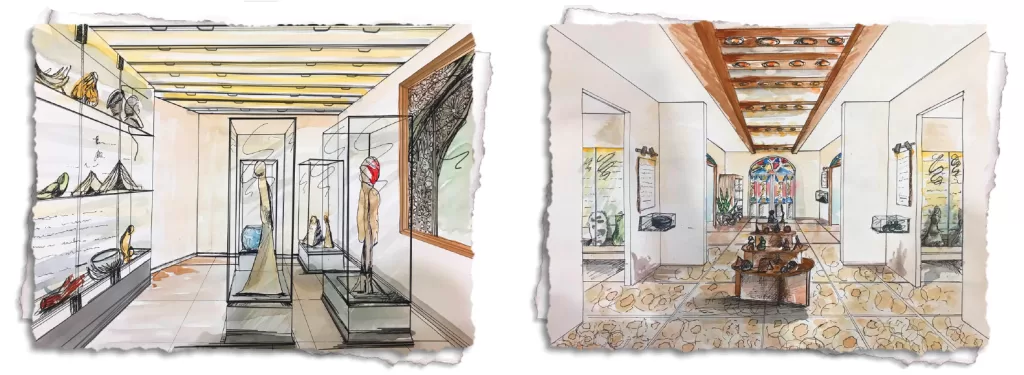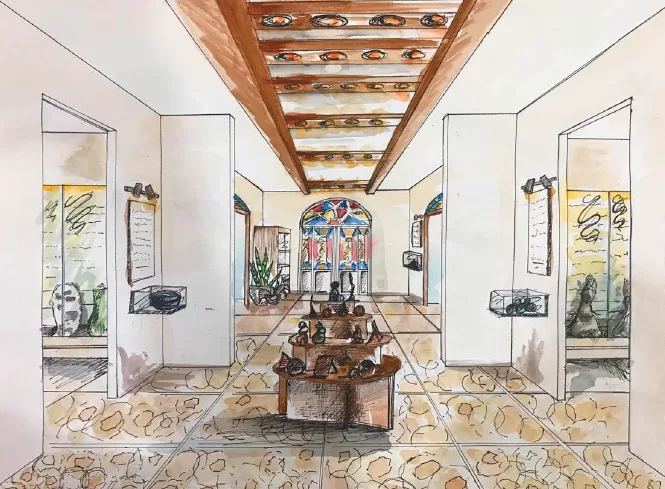Historical Artifacts Museum Design
Step into the enchanting world of historical artifacts, where the past comes alive and whispers its captivating tales. A well-designed museum serves as a gateway to our rich cultural heritage, providing visitors with an immersive experience that transports them through time. In this article, we explore the meticulous design and layout of a historical artifacts museum, showcasing the concept presentation, sketches, and watercolors that bring this vision to life.
Designing with Purpose:
The design of a historical artifacts museum goes beyond aesthetics; it encompasses functionality, preservation, and storytelling. The concept presentation unveils a carefully planned layout, ensuring visitors can navigate the museum seamlessly while discovering the wonders it holds. The museum’s design focuses on creating maneuvering spaces that mimic the ambiance of a gallery, enhancing the overall experience.

Museum Design Furniture Plan
Showcasing Artifacts with Elegance
Glass cases play a pivotal role in the museum design, as they are responsible for displaying the precious artifacts while safeguarding their integrity. The concept presentation highlights various types of glass cases, including standing, wall-mounted, built-ins, and free-standing options. Each case is thoughtfully positioned to maximize visibility and engage visitors with the artifacts’ splendor.

Museum Design Interior Concept
Preserving History with Security
Preservation and security are paramount in a historical artifacts museum. The design incorporates secure lockers, providing a controlled environment for storing valuable pieces. These lockers are designed to seamlessly blend into the museum’s aesthetic while ensuring the artifacts remain protected from potential risks.
Illuminating the Past
Lighting plays a crucial role in setting the mood and enhancing the overall ambiance of the museum. The concept presentation features chrome-finished lights strategically placed to illuminate the artifacts, creating an awe-inspiring atmosphere. Carefully curated lighting not only highlights the intricate details of each artifact but also adds a touch of elegance to the museum’s overall design.
Conclusion
Designing a historical artifacts museum requires a delicate balance between aesthetics, functionality, preservation, and storytelling. The concept presentation, sketches, and watercolors showcased in this article offer a glimpse into the meticulous planning and thoughtful execution that goes into creating a space that celebrates our rich cultural heritage. From the carefully chosen glass cases and secure lockers to the captivating lighting design, every element aims to provide visitors with an immersive and unforgettable journey through time.

